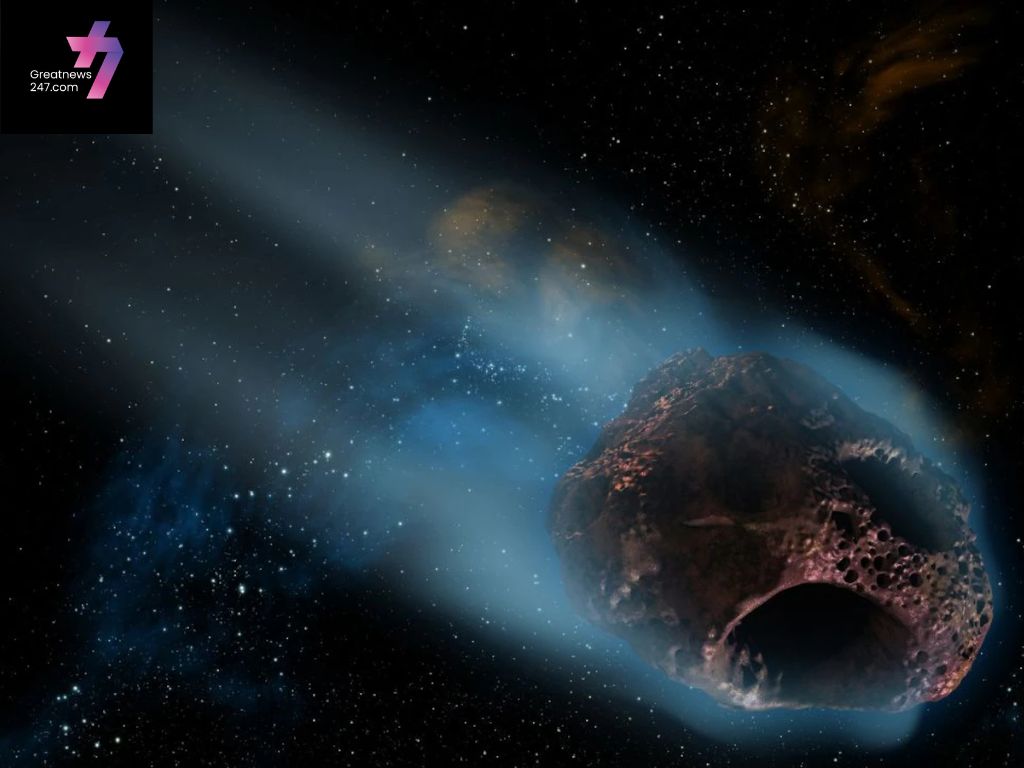NASA Warns of 620-Foot Asteroid Approaching Earth at High Speed Today
In a startling announcement, NASA has alerted the public about a significant astronomical event set to occur today: a massive asteroid, roughly the size of a 620-foot tall building, is hurtling toward Earth at an alarming speed. This news has captured global attention, raising concerns about potential impacts and the need for increased awareness and preparedness.
The Asteroid’s Profile
The asteroid in question is classified as a Near-Earth Object (NEO), a category that includes asteroids and comets with orbits that bring them into proximity with Earth. Measuring approximately 620 feet in diameter, this asteroid is notably large compared to other NEOs and is expected to approach Earth closer than many previous encounters. For context, this size is comparable to the length of two football fields stacked end-to-end, making it a substantial object in terms of potential impact.
NASA has indicated that the asteroid is traveling at a speed that poses a significant concern. While it is not expected to collide with Earth, the high velocity of the asteroid means that it will be passing at a relatively close distance. This proximity is enough to warrant careful monitoring and detailed observation.
Trajectory and Impact Risks
According to NASA’s Jet Propulsion Laboratory (JPL), the asteroid’s trajectory has been closely tracked using advanced telescopes and observational technologies. Current calculations suggest that the asteroid will pass Earth at a safe distance, well beyond the boundaries that would cause a direct impact. However, its speed and size mean that even a near miss is of considerable interest to scientists and astronomers.
Asteroids of this size have the potential to cause significant damage if they were to impact Earth. Although today’s asteroid is not on a collision course, its close approach serves as a reminder of the potential hazards posed by NEOs. The scenario of a direct hit, while unlikely in this instance, could have catastrophic consequences depending on the location of the impact.
Monitoring and Precautions
NASA and other space agencies around the world continuously monitor NEOs to assess their trajectories and potential risks. In the event of an asteroid being identified as a threat, a range of mitigation strategies could be considered, including deflecting the object or preparing for possible impact scenarios.
For now, the focus remains on ensuring that the public is informed and that any necessary precautions are in place. NASA’s asteroid tracking systems and observational tools will be working diligently throughout the day to monitor the asteroid’s approach and to provide updates as necessary.
Public Awareness and Scientific Interest
The approach of such a large asteroid highlights the importance of continued investment in space monitoring and research. Public awareness of near-Earth objects and their potential risks is crucial for ensuring preparedness and fostering scientific interest in planetary defense.
Educational outreach efforts by space agencies often include information on how these objects are tracked, the science behind their movements, and the steps taken to protect Earth from potential threats. As the asteroid makes its closest approach, it will be an opportunity for scientists to gather valuable data that could enhance our understanding of NEOs and improve future monitoring techniques.
Future Implications
The event also underscores the importance of international collaboration in space observation and planetary defense. Agencies like NASA, the European Space Agency (ESA), and others around the globe work together to track and study asteroids, sharing data and strategies to address potential threats.
While the current asteroid poses no immediate risk, its approach serves as a valuable case study for the scientific community. Researchers will use this data to refine their models and improve prediction accuracy for future asteroid encounters.
Conclusion
NASA’s warning about the 620-foot asteroid approaching Earth today serves as a significant reminder of the dynamic nature of our solar system and the potential hazards that exist beyond our planet. While the asteroid is not expected to collide with Earth, its close approach provides an opportunity for scientific observation and public education on the subject of near-Earth objects.
As the day progresses, continued monitoring and updates will ensure that any changes in the asteroid’s trajectory or behavior are promptly addressed. For now, the focus remains on appreciating the advancements in space monitoring technology that allow us to keep track of such celestial events and ensure our safety from potential space hazards.



